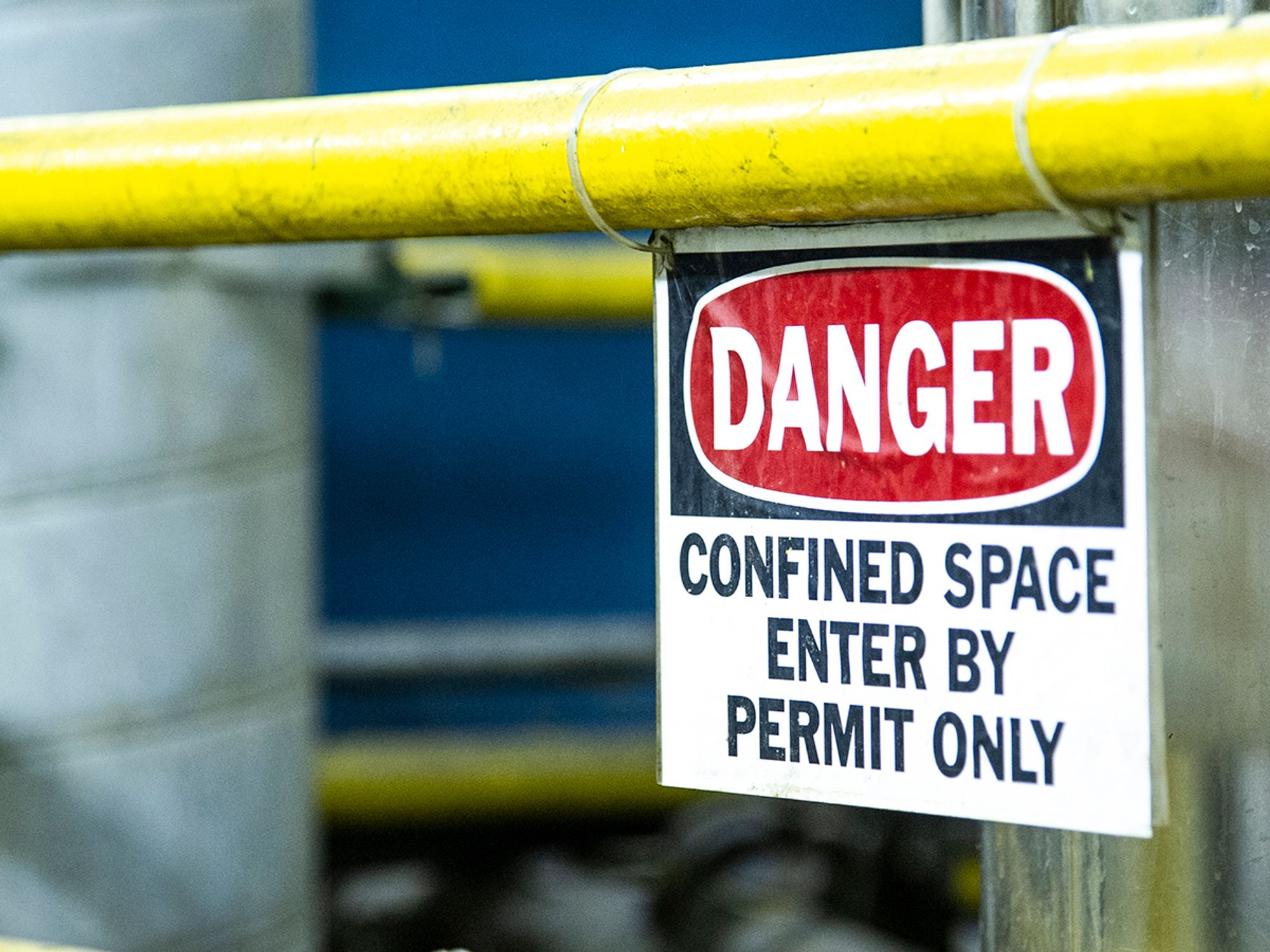How are worksites evaluated for permit spaces? (Construction)

- Each employer must designate a competent person to identify confined spaces that are permit spaces on a worksite.
- The competent person determines which spaces are permit spaces by evaluating and testing each space for certain hazards.
Before starting work on a worksite, each employer must ensure that a competent person identifies all confined spaces where employees may work and determines for each space whether it is a permit-required confined space (permit space). The competent person must answer the following four questions, testing as necessary, to determine whether a confined space is a permit space. If the answer to one or more of these questions is “yes,” the space is a permit space.
Question 1: Does the space contain or have the potential to contain a hazardous atmosphere?
Most deaths and injuries in confined spaces result from atmospheric hazards, a class of hazard that includes insufficient oxygen and both toxic and flammable chemicals. The competent person must evaluate whether the following hazards are or may be present before workers enter the space, testing for each as necessary:
- Oxygen deficiency (concentration less than 19.5%) or excess (concentration above 23.5%);
- Concentration of any flammable gas, vapor, or mist greater than 10% of its lower explosive limit;
- Airborne combustible dust at a concentration equal to or greater than its lower explosive limit; and
- Atmospheric concentration of any substance that can cause death, incapacitation, injury, acute illness, or impairment of ability to self-rescue.
In evaluating atmospheric hazards, the competent person must consider:
- The hazards present in the space before any workers enter; and
- Whether the work that will be performed can introduce toxic, flammable, or combustible air contaminants or lead to an excess or deficiency of oxygen.
To perform the second part of this evaluation, the competent person must be familiar with the work to be done in the space and the potential for that work to introduce atmospheric hazards. For example, a confined space that is safe when first entered can become deadly if inert gas welding inside the space leads the inert gas to displace oxygen from a worker’s breathing zone.
The competent person must also evaluate chemicals for which no permissible exposure limit (PEL) is set by the Occupational Safety and Health Administration (OSHA). For example, if a product’s label or the product manufacturer’s safety data sheet warns that a product is harmful if inhaled and should not be used without adequate ventilation, the competent person must evaluate whether use of that product in a confined space requires the space to be classified as a permit space.
Question 2: Does the space contain a material with the potential to engulf an entrant?
Engulfment means the surrounding and effective capture of a person by a liquid or finely divided (flowable) solid substance that can cause death if inhaled or cause death by suffocation, strangulation, constriction, or crushing.
The competent person must consider whether any liquid or flowable solid (such as sand) could enter the space. Any pipe or manhole in an operating water or sewer system in which a worker works is a confined space that could potentially engulf an entrant and must be treated as a permit space.
Question 3: Does the space have an internal configuration such that an entrant could be trapped or asphyxiated by inwardly converging walls or by a floor that slopes downward and tapers to a smaller cross section?
An area of a confined space with a small cross section can develop a hazardous atmosphere if ventilation is inadequate. In addition, a space of this configuration could prevent an injured worker from escaping the space and make rescuing the worker more difficult.
Question 4: Does the space contain any other recognized serious safety or health hazard(s) that would pose an immediate danger to a worker’s life or health or would impair the worker’s ability to escape from the space if injured?
Hazards that the competent person should consider include fire and explosion hazards; the presence of mechanical, electrical, hydraulic, and pneumatic energy; temperature extremes; radiation; noise; corrosive chemicals; and biological hazards (such as venomous animals or insects).
